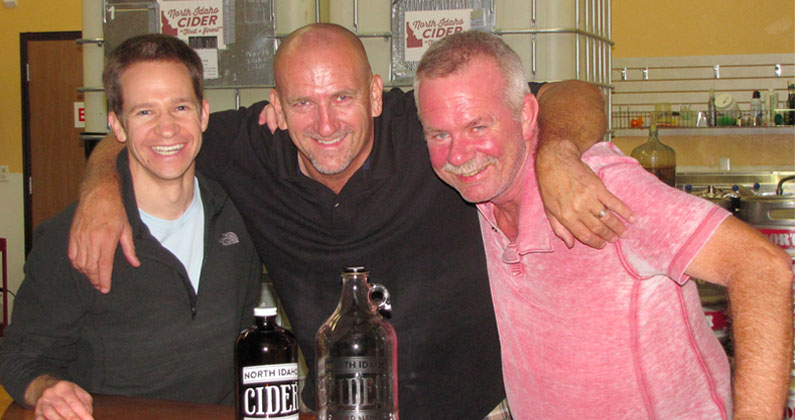Mountains swell up to the south of North Idaho Cider’s taproom, located near the resort town of Coeur d’Alene, Idaho. Inside the apple-adorned space, patrons nurse pints of dry cider on a polished bar crafted from an old bowling alley lane. North Idaho Cider—run by Matt Peterson, Jeff Selle and Keith Allen—opened its tasting room in late December 2014. We sat down with Keith Allen to learn more about one of Idaho’s first cideries.
Describe North Idaho Cider.
We’re three guys that have a vision of producing a quality product that’s got a local or regional influence to it. Technically, we’re the first federally licensed cidery in the state of Idaho… From a marketing standpoint, we’re aiming to be not only Idaho’s first but also Idaho’s finest hard cider maker.
What style of ciders do you focus on?
All of our ciders at this point are dry as opposed to sweet. That probably comes more from our personal taste, but it’s also an alternative to the majority of ones we’ve seen on the market, which are sweet. So it’s created an interest on the consumer’s part to have a dry option.
Why does the dry style interest you?
Within the last five years almost everybody has had the commercially produced ones. … I don’t look at them so much as ciders as I do sweetened alcoholic beverages—that would be the name brand ones that are out by the large manufacturers, versus the handcrafted, truly artisan type ciders that we make.
What ciders have you released?
The two products we’ve launched with are Lake City Dry and Lake City Hopped. They’re very similar in the fact that we dry-ferment both of them, but then one of them has the hops in it… It’s more of an aromatic hop than a bittering hop.
Where do you source your apples?
Currently, we get all our apples from the Yakima Valley, or all of our juice. The majority of the juice that’s available, from a raw product standpoint, typically comes from dessert apples, which is a mixture of all kinds of apples that you would find in the grocery store.
If most cideries source their juice from the same bulk suppliers, how do you set your ciders apart?
Once it comes into our facility, the yeasts that we’ve chosen and the blend that we use for the hops that we have in our hopped product and the way that we rack it [all make our ciders unique]… From a bulk standpoint, I think everyone is using the suppliers out of the Yakima Valley because the blends that they can get there are cost effective to use and you can have an end product that you can compete with in the market based on the quality as well as the price point.
What’s the cider scene like in North Idaho?
I think it’s pretty active, really. There’s another local company—we know the folks that are involved there—by the name of Summit Cider and they’ve got some great products, too…We’re in a resort town in Coeur d’Alene, Idaho and I think when people come into town they want to have a local product. If you go someplace for dinner or lunch, you want to sit on the patio and have an adult beverage. People tend to ask, “Do you have something that’s made locally?” They’re asking for cider as much as they’re asking for local beer.
Photos courtesy of North Idaho Cider





